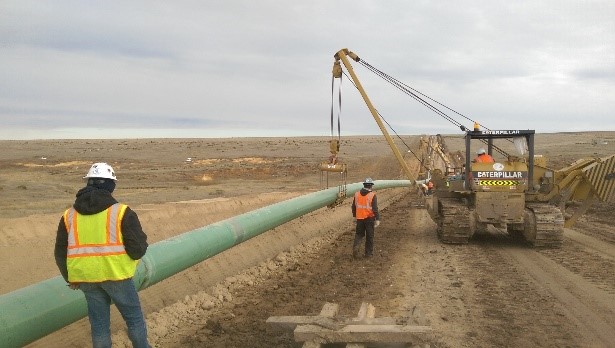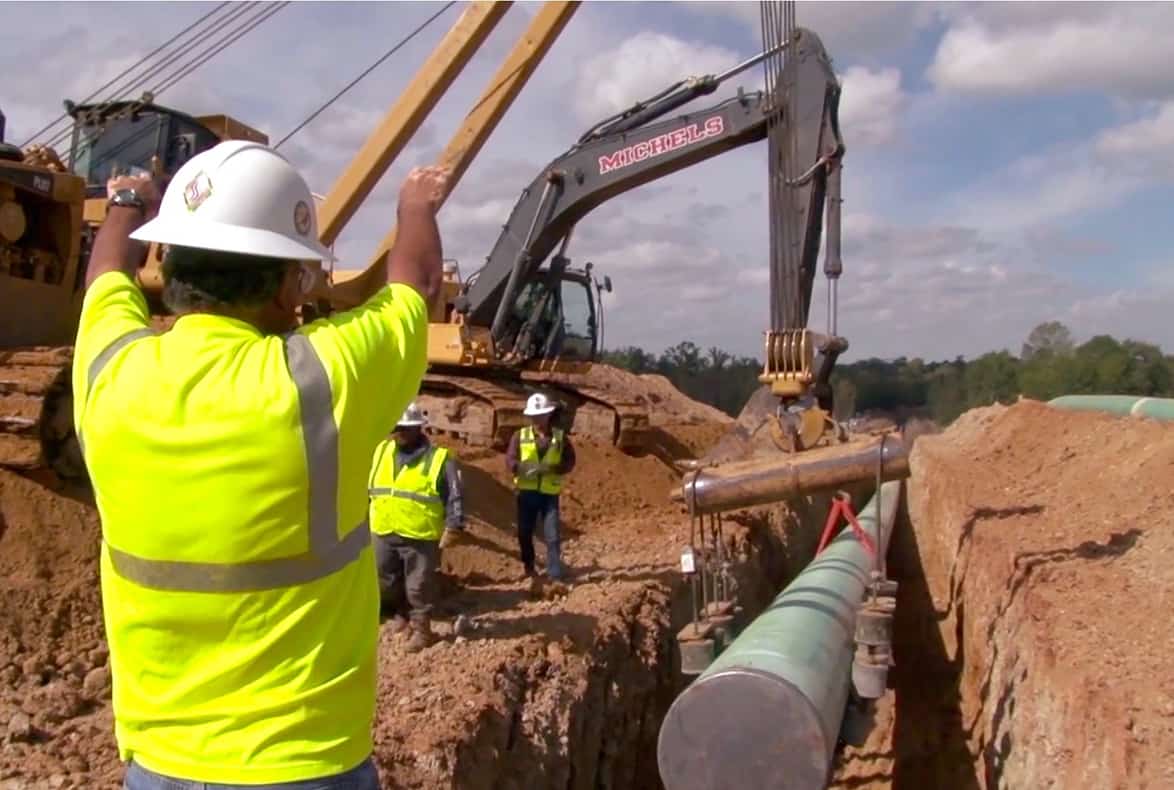Why You Should Consider Underground Work With Creek Pipe trenching services
Recognizing the Fundamentals of Pipes Installation: What You Need to Learn About the Process
Appropriate pipe installation is essential for any pipes system. It requires cautious factor to consider of various aspects, consisting of product option and adherence to neighborhood laws. A tactical layout can stop concerns like pressure loss, while the right devices assure effective joining strategies. Nevertheless, also experienced installers can make typical mistakes. Comprehending these basics can cause a more efficient and durable system, prompting a better check out the crucial aspects included in the process.
Choosing the Right Products for Pipe Installation
When thinking about pipe installation, the choice of suitable materials is necessary to making sure durability and capability. Different materials are available, each offering one-of-a-kind advantages and considerations. For instance, PVC pipelines are light-weight, immune to deterioration, and economical, making them perfect for property plumbing. On the other hand, copper pipelines, recognized for their durability and capacity to stand up to high temperature levels, are typically favored for home heating systems.Additionally, galvanized steel pipelines supply strength and resilience, suitable for sturdy applications, although they are at risk to rust over time.For underground installations, polyethylene pipelines are preferred because of their versatility and resistance to tension breaking. Correct material selection depends on the certain needs of the job, consisting of pressure rankings, temperature variants, and the chemical nature of the fluids being transported - Creek Pipe reviews. Inevitably, notified selections pertaining to pipe materials add substantially to the total success and longevity of pipes systems
Comprehending Local Building Ordinance and Regulations
Just how can understanding local building ordinance and policies effect pipe installation? Knowledge with these codes is necessary for guaranteeing that pipe setups are safe, certified, and reliable. Neighborhood building regulations outline particular demands regarding products, installation techniques, and safety and security procedures, which must be stuck to to avoid prospective lawful concerns and pricey fines.Failure to comply can bring about inspections being failed, hold-ups in job completion, or also mandated elimination of improperly set up pipelines. In enhancement, comprehending zoning regulations and laws can affect the sort of materials enabled, in addition to the approaches used for installation.Contractors and property owners alike should invest time in evaluating local policies before beginning any kind of installation task. This proactive strategy not just advertises security but also enhances the overall quality and durability of the plumbing system, inevitably fostering long-term performance and contentment.
Planning Your Pipe Layout and Layout
Correct preparation of pipe format and design is necessary for attaining a reliable plumbing system. This procedure starts with examining the details requirements of the room, taking right into account the area of components and devices. Precise measurements assure that pipes are effectively routed, minimizing bends and turns that can result in pressure loss.Consideration of the circulation prices and the kinds of products made use of is essential, as different materials have varying durability and compatibility with plumbing systems. In addition, the designer should account for future expansions or alterations to the layout, enabling flexibility in situation of renovations.Efficient drain and ventilation are additionally considerable elements of the layout, as they prevent clogs and ensure correct waste removal. Cooperation with neighborhood building codes ensures compliance and safety and security, which is extremely important in any pipes installation job.
Crucial Devices and Tools for Installation
Effective pipe installation depends upon having the right devices and equipment available. Essential tools consist of pipe cutters for tidy cuts, wrenches for tightening up fittings, and pliers for gripping and transforming pipelines. Additionally, a level guarantees pipelines are mounted uniformly, while a gauging tape aids in attaining exact lengths.For particular materials, a blowpipe may be necessary for copper pipes, while a PVC cutter is essential for plastic alternatives. Safety and security tools, such as handwear covers and safety glasses, shields installers from possible threats throughout the process.A pipeline bender can be especially useful for creating smooth curves without compromising stability, while a torque wrench assurances that links are safeguarded to the manufacturer's specifications.Having these tools easily available not only promotes a smoother installation process however also adds to the general toughness and capability of the pipes system. Correct equipment is essential in achieving resilient results.
Strategies for Appropriate Pipe Signing Up With and Sealing
Achieving a safe and secure and leak-free link in between pipes requires cautious attention to signing up with and sealing techniques. Different methods exist, each matched to different pipe materials and applications (Creek Pipe near me). As an example, welding is often used for metal pipes, ensuring robust connections through heat combination. In contrast, plastic pipes take advantage of solvent concrete or blend welding, creating solid, long-term bonds.Threaded connections prevail in both steel and plastic piping, requiring accurate positioning and using suitable sealers, such as Teflon tape or pipe dope, to avoid leakages. Compression Web Site installations supply another option, where mechanical pressure protects the pipelines together, making them quickly took apart for maintenance.Regardless of the method chosen, correct preparation is vital. This includes cleansing pipe finishes and ensuring they are without debris. Applying these strategies faithfully will enhance the long life and dependability of the pipe system, ultimately adding to its reliable efficiency
Common Mistakes to Prevent During Installation
Throughout pipe installation, avoiding common blunders is crucial for ensuring a dependable and efficient system. One frequent mistake is falling short to determine and cut pipelines accurately, which can bring about incorrect installations and leakages. In addition, neglecting to check the compatibility of products can cause rust or other damages with time. Improperly safeguarding joints and links can also produce weak factors in the system, creating prospective failures.Another typical error is overlooking the relevance of slope and drain; pipes need to be mounted at the appropriate angle to assist in correct flow. Poor assistance for pipelines can result in sagging and stress, affecting the honesty of the system. Ultimately, neglecting local codes and policies can lead to expensive rework and security threats. By knowing these mistakes, installers can considerably enhance the toughness and performance of pipe systems.
Upkeep Tips for Resilient Pipe Systems
To assure the long life of pipe systems, routine inspections and cleaning are important practices. These steps assist determine prospective concerns before they intensify into significant troubles. Furthermore, using proper insulation techniques can even more shield pipelines from temperature fluctuations and environmental variables.
Routine Assessments and Cleaning
Normal examinations and cleansing are landscape drainage pipe crucial for keeping the long life and effectiveness of pipe systems. Consistently analyzing pipelines for indicators of rust, leakages, or obstructions can aid recognize prospective problems before they escalate right into costly fixings. Cleaning up pipes periodically eliminates buildup that can limit circulation and advertise deterioration. It is recommended to set up assessments at the very least annually, but a lot more regular checks might be essential in high-usage settings. Utilizing professional solutions for comprehensive cleansing assurances that all particles is successfully gotten rid of. In addition, keeping records of assessments and maintenance tasks help in tracking the system's health and wellness in time - Creek Pipe trenching services. By prioritizing these practices, homeowner can improve the dependability and life-span of their pipe systems
Appropriate Insulation Techniques
Effective insulation strategies play an important duty in preserving the performance and longevity of pipe systems. Appropriate insulation decreases warmth loss in warm water pipelines and protects against freezing in cool water pipelines, significantly lowering energy costs and possible damage. Usual products used for insulation consist of fiberglass, foam, and rubber, each offering varying levels of thermal resistance. It is essential to ensure that insulation is used evenly, covering all exposed areas without spaces. In addition, safeguarding insulation with proper fasteners aids keep its position and performance his response in time. Routine evaluations should be performed to determine wear and tear, guaranteeing prompt substitutes. By executing these methods, pipe systems can run effectively and have an extensive life span, ultimately benefiting both the environment and the property owner.

Frequently Asked Questions
How Do I Identify the Appropriate Pipe Size for My Job?
Figuring out the ideal pipe dimension entails examining the task's flow demands, pressure requirements, and the sort of liquid being transported. Consulting style criteria and performing computations guarantees suitable efficiency and effectiveness in the installation procedure.
What Are the Environmental Impacts of Different Pipe Products?

Can I Set Up Pipes Myself or Should I Hire a Professional?
The concern of whether to mount pipelines independently or employ a specialist frequently depends upon the individual's ability degree and job intricacy. An expert may assure compliance with laws and reduce possible long-lasting concerns.

How Much Time Can I Expect My Pipe Installation to Last?
The longevity of pipe installation varies significantly, generally lasting 20 to 100 years, depending on materials, installation quality, and maintenance. Regular assessments and correct treatment can boost resilience and prevent premature failures.

What Are the Indicators of a Failing Pipe System?
Signs of a stopping working pipe system consist of constant leaks, uncommon water pressure changes, stained water, mold development, and relentless wetness. Homeowners should keep an eye on these indications to stay clear of costly damages and guarantee prompt repairs are made.